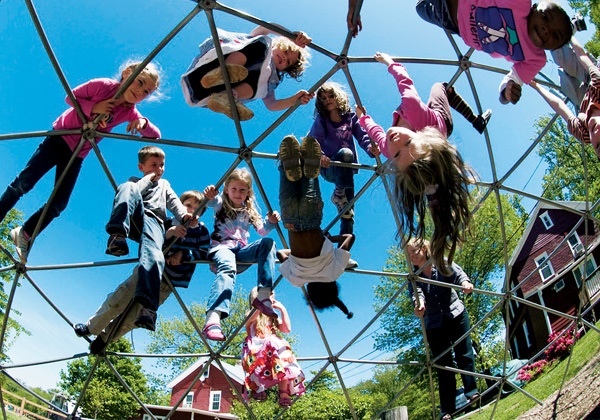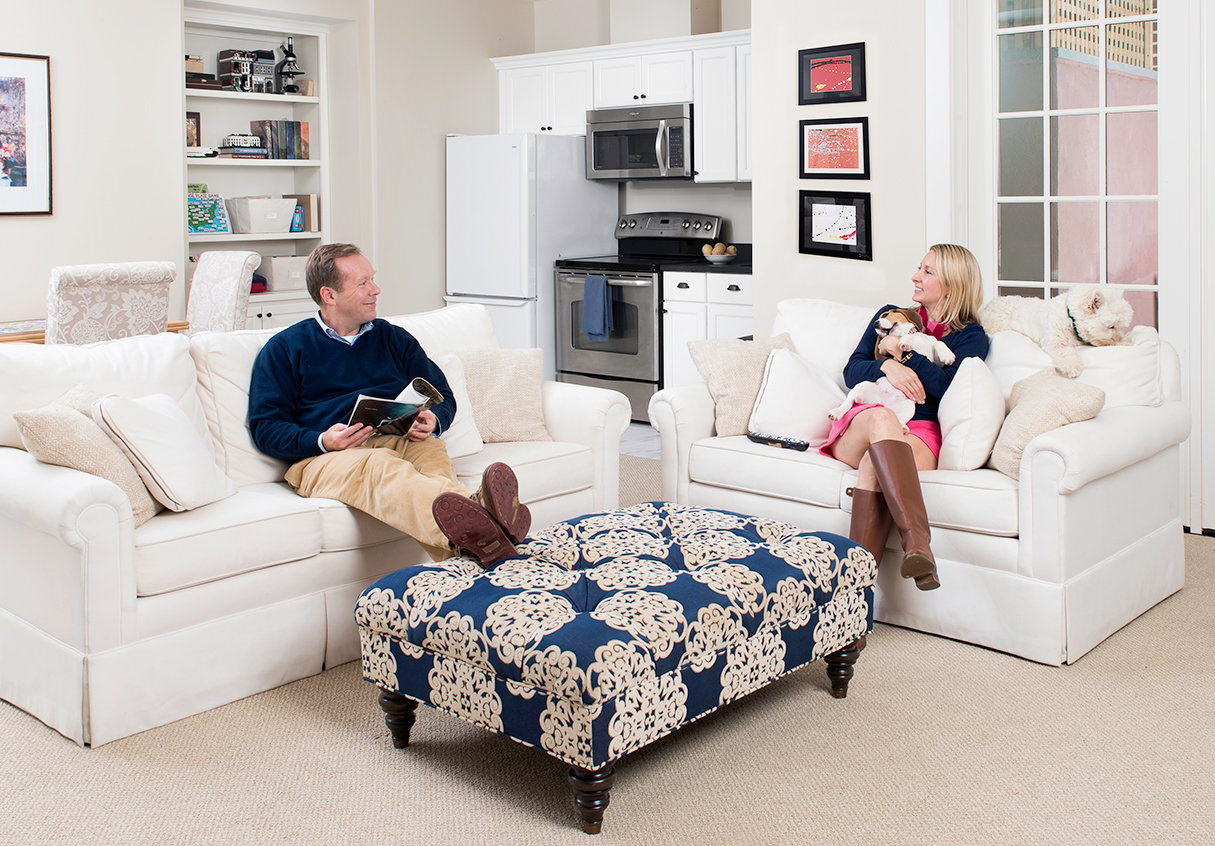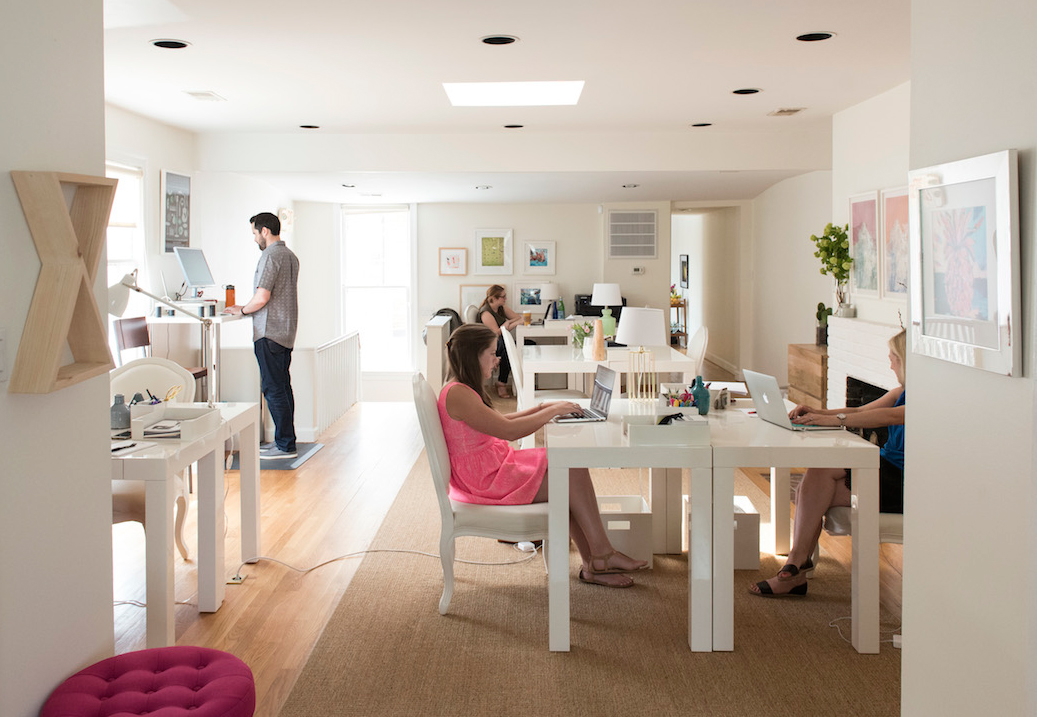For more information on private schools, see our 2010 Private Schools guide.
Washington has hundreds of good private schools—so many that it can sometimes seem hard to tell them apart. But not every school is right for every kid.
Here are six that offer something different—whether a unique philosophy, an innovative curriculum, or an unusual school culture. At one, yoga is an integral part of the curriculum; at another, every classroom has a speech-and-language pathologist.
Open houses can give parents and kids a sense of whether a school is a good fit. “If you walk into a progressive environment—something that’s a little different from the mainstream—some people are going to immediately say, ‘Aha—this is what I’ve been looking for,’ ” says educational consultant Peter Sturtevant, director of the DC-based School Counseling Group. “Or they’re going to say, ‘My goodness, this is not for me.’ ”
The goal of these primary and secondary schools is to prepare students for the next step in their education. Like other private schools, they offer a first-rate education in a nurturing environment, but what makes them stand out is their focus or mission.
>> Next: 6 private schools with extra-special educational offerings
GLOBAL REACH
The students, parents, and staff at Washington International School come from 90-plus countries—more than were represented at the Winter Olympics this year. “Even our English teachers come from Australia, New Zealand, Hong Kong, and Canada,” says admissions director Kathleen Visconti.
This internationalism is reflected in every aspect of student life. In pre-kindergarten and kindergarten, students spend all day learning in either Spanish or French. When they reach first grade, they begin a dual-language program with half the day in English and half in their chosen second language. As they continue through the school—which goes to 12th grade—they can add more languages such as Mandarin, Dutch, or Italian.
All teachers are certified in their country of origin as well as in the United States. The two libraries are stocked with 35,000 books in the core languages—English, French, Spanish, and Dutch—and exchange programs offer chances to visit countries around the world.
“Studying languages opens up all kinds of pathways in the brain,” says Visconti. “The more languages you know, the more potential your brain has for solving problems and making connections.”
WIS is one of the few schools in the country to offer a complete International Baccalaureate curriculum from pre-kindergarten through grade 12. More than half of WIS graduates earn a bilingual IB diploma.
With a record enrollment of 914 this year, the school is growing—it typically receives three to four applicants for every spot. “People are waking up to the idea that languages are the wave of the future,” says Visconti. “An international, global education opens doors.”
3100 Macomb St., NW; 1690 36th St., NW; 202-243-1800. Tuition: $21,510 and up (half-day pre-K: $14,635).
IN TUNE WITH NATURE
Burgundy Farm Country Day School is centered on the belief that kids learn best by doing. The school—with 285 students from junior kindergarten through eighth grade—takes advantage of its woodsy, 25-acre campus.
Throughout the day, students move from building to building. Bridges cross over ponds, and a barn houses sheep, goats, chickens, and rabbits. The goal, says head of school Jeff Sindler, is to foster a love of learning and preserve a child’s innate curiosity.
On a typical day, kids are scattered across campus, engaged in all kinds of activities and lessons—from building forts and feeding animals to caring for their own plot in a garden.
The curriculum often weaves a theme through several subjects. A unit on the Middle Ages might include a math lesson on how a catapult works, a social-studies lesson on feudalism, and a costumed performance.
Another draw is Cooper’s Cove, the school’s 500-acre wildlife sanctuary in West Virginia. Beginning in the spring of first grade, students make two three-day trips to that campus every year to be immersed in nature. “Our goal is to never lose that initial excitement that kids have about learning,” says Sindler. “Our kids leave eighth grade and they understand themselves. They know their strengths. They are excited about high school.”
3700 Burgundy Rd., Alexandria; 703-960-3431. Tuition: $21,605 and up.
ALL ABOUT READING
Every classroom at the River School has two teachers: one who has a master’s in education and one with a master’s in speech-and-language pathology. “Twenty percent of American students can’t read proficiently by third grade,” says head of school and founder Nancy Mellon. “So we thought, let’s take the nation’s specialists in language-and-literacy development and pragmatic language and put them in the classroom together."
Founded in 1999, the River School goes from 18 months through third grade—a window of development that Mellon says is crucial for learning to read. But perhaps what makes the school stand out most is its services for children with hearing loss. About 15 percent of the 250 students have hearing loss, a cause close to Mellon’s heart.
Mellon’s youngest son was born deaf. “I was very frustrated with the options out there for other families that were in a similar situation but didn’t have the kind of resources that we had,” she says. The 75-person staff at River includes an audiologist, a psychologist, two occupational therapists, and more than 20 speech pathologists.
In the classroom, Mellon says, it’s very difficult to tell which kids have hearing loss. Lessons are hands-on and experiential. You may see kids baking bread, putting on a play, or taking music classes. Throughout the day, teachers provide real-time language mentoring—helping students understand one another by asking questions and encouraging communication. Class size typically ranges from 10 to 14 kids.
“Because of our huge focus on language and literacy, our kids really learn how to relate to other people,” says Mellon. “The best thing we do for our students is turn them into comfortable communicators and kind, well-rounded people.”
4880 MacArthur Blvd., NW; 202-337-3554. Tuition: $25,655 and up.
MIND AND BODY
Mornings at the Oneness-Family School begin with “circle time,” when teachers lead the younger students in reflection. “It sets the tone for the whole day,” says executive director Andrew Kutt. “It calms the students—their mind and body are centered, and they are really ready to learn.”
Oneness-Family, a certified Montessori school, emphasizes building social and emotional skills and fostering multicultural understanding. Its 12-to-1 student/teacher ratio means kids get lots of individual attention.
A certified yoga teacher on staff starts children in yoga beginning in kindergarten—the school goes from two years old through eighth grade. Older students can also learn tai chi.
Teachers stress community service and global awareness. School festivals celebrate United Nations Day and Earth Day. And although the school has no religious affiliation, students learn about belief systems around the world, including agnosticism and atheism. Last year, the school teamed with the nonprofit Amman Imman organization to raise money to build wells in Niger.
Kutt says the school attracts progressive parents who value the philosophy of self-discovery and empowerment. It’s a very international community—more than 60 countries are represented by students and their families.
In the classroom, kids often work independently or in small groups. Following the Montessori tradition, academics are taught thematically rather than as standalone subjects. Kutt describes the curriculum as challenging but not competitive. “We’re not driven by test scores,” he says. “Our students get a very high standard of education without being crushed by the pressures that occur in some other environments.”
6701 Wisconsin Ave., Chevy Chase; 301-652-7751. Tuition: $16,950 and up.
JUST LIKE COLLEGE
The list of classes offered at Emerson Preparatory School reads more like a college course catalog: 20th Century American Foreign Policy; Race, Class, and Gender in the United States; Introduction to Law. Emerson was founded in 1852 as an all-boys prep school that sent young men to Harvard. Over the years, it has evolved into a coed high school with a culture unique in Washington.
Emerson often takes students whom other private schools may pass up—kids who are late in their academic career or have stumbled or made mistakes. “There’s a belief that where you’ve been is secondary to where you’re planning to go,” says head of school John Glick.
Enrollment is capped at 100, and the school offers no extracurricular activities. A block schedule—all classes are 90 minutes, meet five days a week, and last one semester—gives students flexibility to create a curriculum that excites them. Kids who are behind can take a full load of classes to catch up, while those with an out-of-school passion such as ballet or ice skating can load their schedule in the morning to make time for practice.
In addition to colleges ranging from liberal-arts institutions such as Reed in Oregon to state schools such as the University of Maryland, graduates have gone on to study gardening at Dumbarton Oaks, clothing design at the Fashion Institute of Technology, and cooking at the Culinary Institute of America.
“We want kids to find themselves, to start walking the journey with confidence,” says Glick. “High school should be an experience in diversity, not a race to the top.”
1324 18th St., NW; 202-785-2877. Tuition: $10,500 per semester.
PROGRESSIVE PIONEER
Before founder Alice Mendham Powell even opened the doors at the Green Acres School, she raised money for scholarships. The first integrated school in Montgomery County, Green Acres has been committed to socioeconomic diversity since its inception in 1934.
As one of the first progressive schools in Washington, Green Acres—which goes from pre-kindergarten through eighth grade—has been a pioneer in the classroom as well. “Probably the most challenging thing that any school tries to do is build an intrinsic love of learning,” says head of school Neal Brown. “We try to give kids opportunities to delve into things that matter to them.”
The curriculum focuses on problem solving and creativity rather than memorization. For example, in eighth grade when kids learn about the Vietnam War, they may be assigned a position on the war and asked to defend it against different questions. Fifth-graders studying Maryland may create a mock museum and play the role of docent to teachers and other visitors.
“We don’t want there to be a dramatic wall between the life of school and the life outside of school,” says Brown. Last year, sixth-graders read Maniac Magee, a novel whose protagonist is a homeless child. After learning more about homelessness in Washington, the students organized a schoolwide clothing drive.
Class sizes range from fewer than 10 students in pre-kindergarten to a maximum of 16 in the upper grades. Time for reflection is also important. Says Brown: “We want kids to understand who they are as learners—what things come naturally, what’s difficult, what they need to be successful, and how to be advocates for themselves.”
11701 Danville Dr., Rockville; 301-881-4100. Tuition: $27,680.
This article first appeared in the November 2010 issue of The Washingtonian.



















